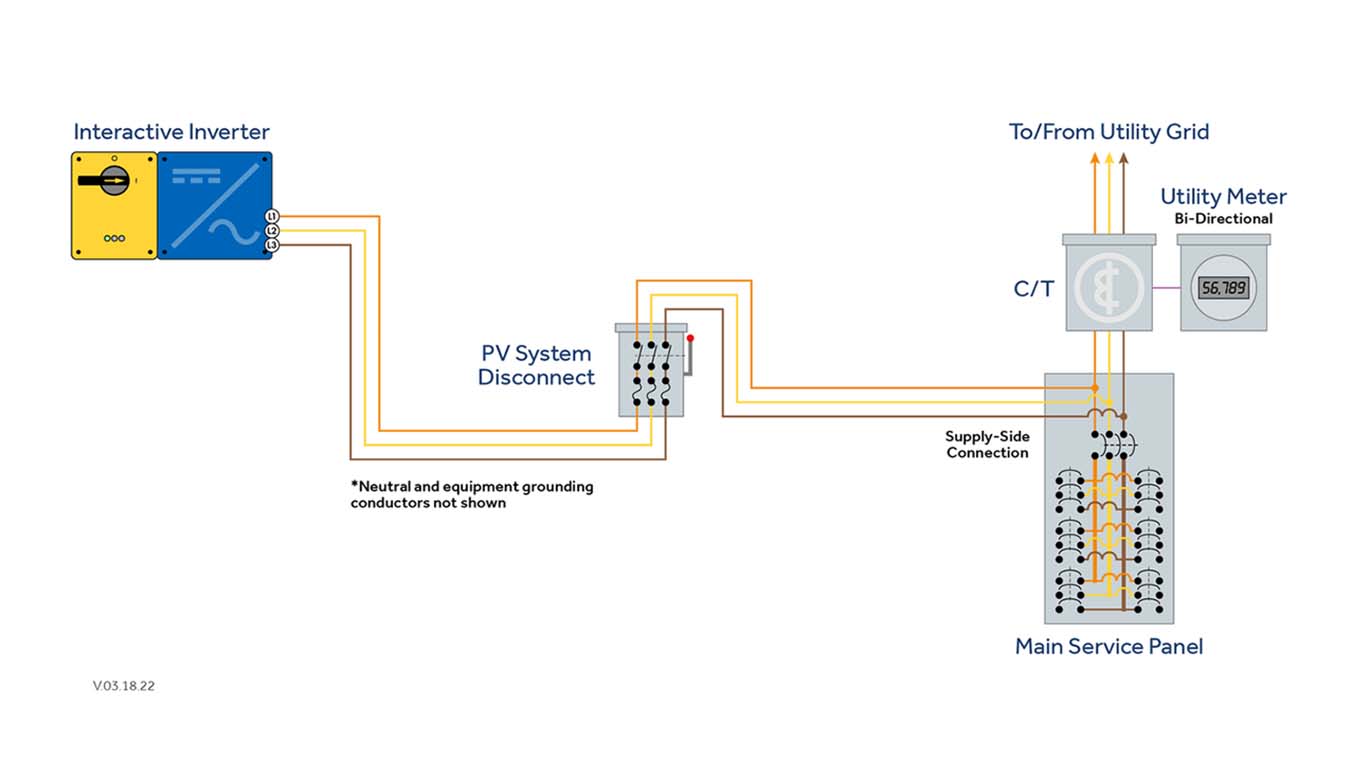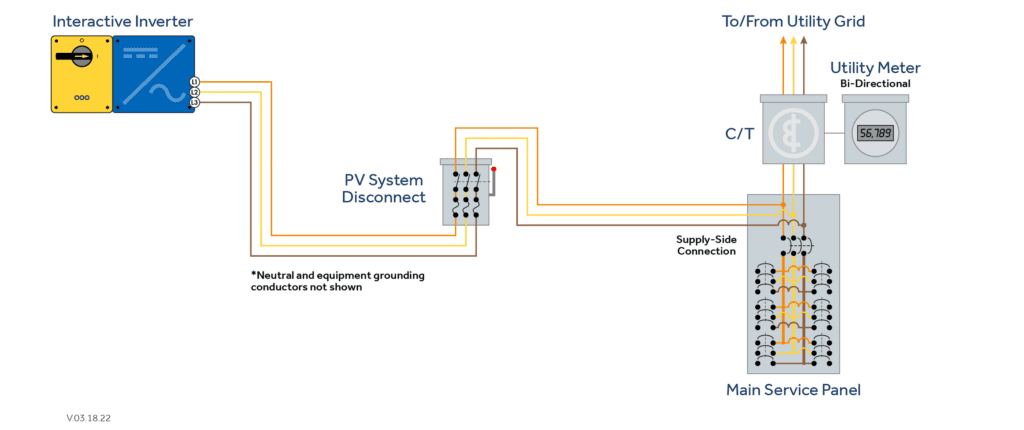
Technical Article
PV Systems and the Six Handle Rule
Our team fields technical questions on topics ranging from code compliance to product compatibility to design best practices through our consulting service. In this and future articles, I will explain some of the most common issues we hear about from manufacturers and EPCs. Let’s start with a very popular question relating to supply-side interconnections:
“Is it possible to add a PV system disconnect as a supply-side interconnection when a service has six main disconnects already installed?”
The short answer to this common question regarding system disconnects as supply-side interconnection is that the NEC simply does support this type of installation. In this article we present the specific relevant Code sections and a broader explanation of reasoning.

The first step in this analysis is defining the maximum number of service disconnects. 230.71 covers these rules and is shown below. All Code references are from 2020, and highlights indicate a change from the 2017 version. The requirements in 230.71 are commonly referred to as the “six-handle rule.” Each service is allowed up to six disconnects to disconnect the power source. This Code section has been long-standing and, in 2020, received some updates, as seen in the (B) paragraph.
(Note: Bold text depicts changes from 2017 to 2020 NEC.)
230.71 Maximum Number of Disconnects.
Each service shall have only one disconnecting means unless the requirements of 230.71(B) are met.
(B) Two to Six Service Disconnecting Means.
Two to six service disconnects shall be permitted for each service permitted by 230.2 or for each set of service-entrance conductors permitted by 230.40, Exception No. 1, 3, 4, or 5. The two to six service disconnecting means shall be permitted to consist of a combination of any of the following:
- Separate enclosures with a main service disconnecting means in each enclosure
- Panelboards with a main service disconnecting means in each panelboard enclosure
- Switchboard(s) where there is only one service disconnect in each separate vertical section where there are barriers separating each vertical section
- Service disconnects in switchgear or metering centers where each disconnect is located in a separate compartment
The key for our application is the first sentence in (B). This provision allows up to six disconnects for services allowed in 230.2. And 230.2 is further refined through 230.2(A).
230.2 Number of Services.
A building or other structure served shall be supplied by only one service unless permitted in 230.2(A) through (D). For the purpose of 230.40, Exception No. 2 only, underground sets of conductors, 1/0 AWG and larger, running to the same location and connected together at their supply end but not connected together at their load end shall be considered to be supplying one service.
A) Special Conditions.
Additional services shall be permitted to supply the following:
- Fire Pumps
- Emergency systems
- Legally required standby systems
- Optional standby systems
- Parallel power production systems
- Systems designed for connection to multiple sources of supply for the purpose of enhanced reliability
Number 5 in 230.2(A) lists parallel power production systems as additional services permitted along with five other systems. 230.71 states each service permitted in 230.2 is allowed up to six disconnects. Therefore, a PV system disconnect in addition to the six service disconnects would be allowed.
In addition, 230.71(B) states that up to six disconnects are allowed for service entrance conductors permitted by a specific exception in 230.40. As it relates to PV systems, Exception number 5 is one of interest.
230.40 Number of Service-Entrance Conductor Sets.
Each service drop, set of overhead service conductors, set of underground service conductors, or service lateral shall supply only one set of service-entrance conductors.
Exception No. 5: One set of service-entrance conductors connected to the supply side of the normal service disconnecting means shall be permitted to supply each or several systems covered by 230.82(5) or 230.82(6).
230.40 allows for multiple service-entrance conductors in specific scenarios, and 230.82(6) defines one of those situations:
230.82 Equipment Connected to the Supply Side of Service Disconnect.Only the following equipment shall be permitted to be connected to the supply side of the service disconnecting means:
(6) Solar photovoltaic systems, fuel cell systems, wind electric systems, energy storage systems, or interconnected electric power production sources, if provided with a disconnecting means listed as suitable for use as service equipment, and overcurrent protection as specified in Part VII of Article 230.
This edition lists PV systems first as equipment allowed. Therefore, through both the 230.2 and 230.40 Code sections, we are allowed to install a PV system disconnect on the service conductors even if there are already six service disconnects installed.
Contact our team to inquire about Mayfield Renewables services—including system design, specialized consulting and educational programs. Contact us to start a project or learn more.


